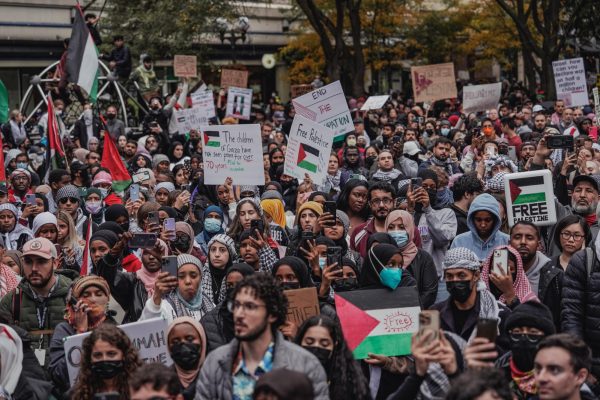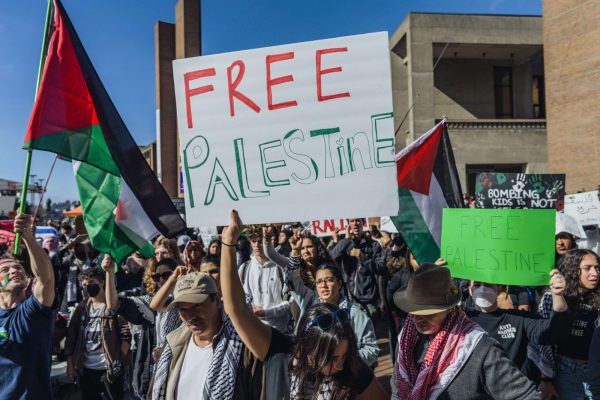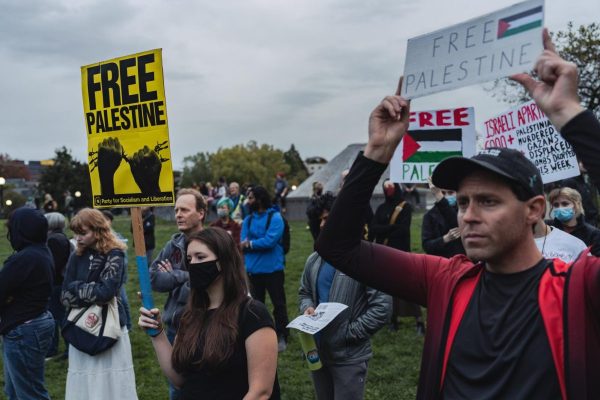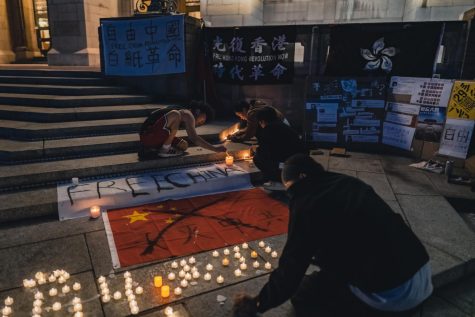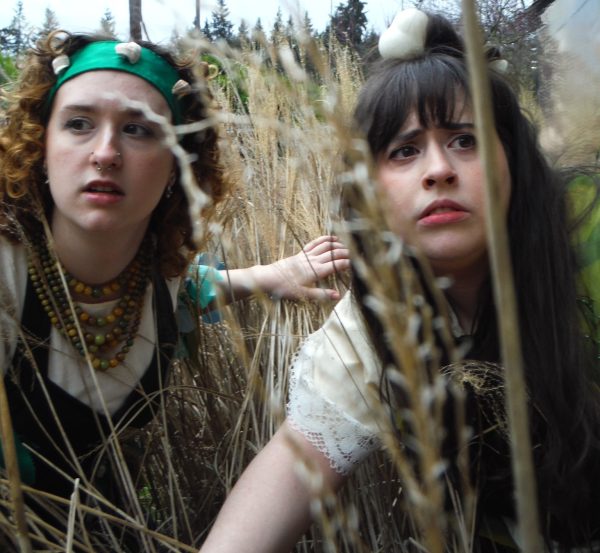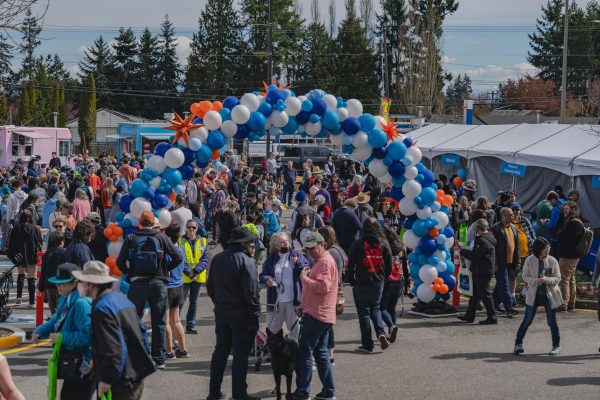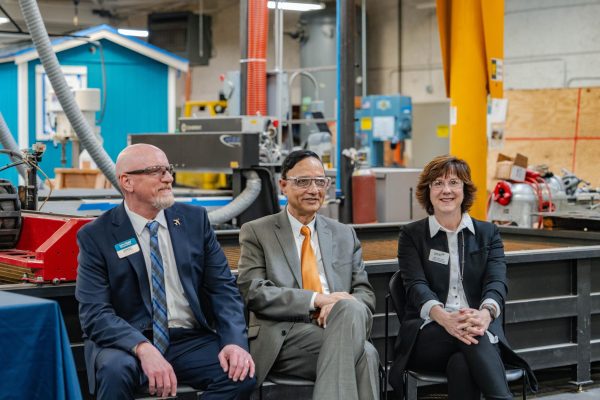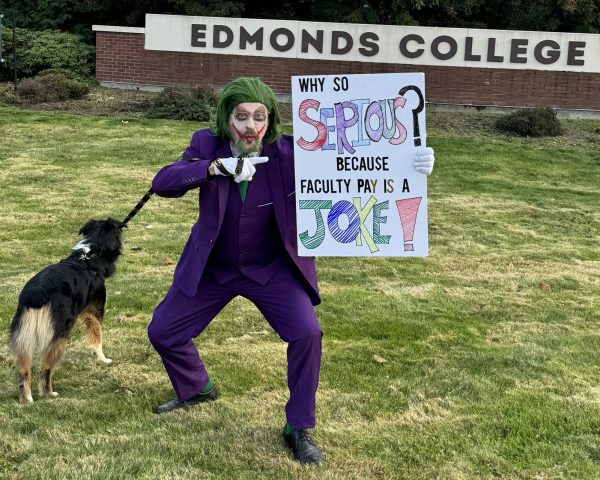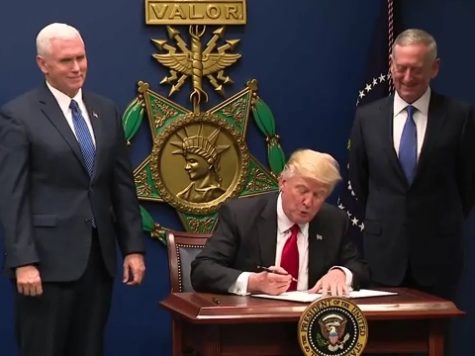There are no shortcuts on the path of diversity
An interview regarding community diversity with Vice President of College Relations and Advancement Dr. Tonya Drake
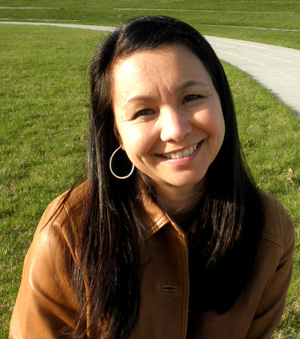
Dr. Tonya Drake, pictured here in 2013, has served as EdCC’s vice president for College Relations and Advancement since 2015.
Editor’s Note :: After a divisive presidential election season The Triton Review felt it relevant to reach out to those who are striving to acknowledge as many voices as possible. Diversity on campus is handled by the office of Equity and Inclusion. Dr. Tonya Drake served at the special assistant for Equity and Inclusion for a year and a half, reporting directly to EdCC President Dr. Jean Hernandez. Currently Dr. Drake is the vice president of College Relations and Advancement. Her former position has been elevated to the cabinet level and there is a national search for a new vice president of Equity and Inclusion. T.H. Sargent, a staff writer for The Triton Review, recently sat down with Dr. Drake to discuss diversity at EdCC.
Sargent: One thing right away that’s noticeable is just how far away the office of Equity and Inclusion is from the main campus.
Drake: One of our goals is to get onto the main campus. Space is at a premium and we will continue the discussions.
Sargent: So it’s an ongoing discussion?
Drake: It is. Our facilities person uses the analogy of that game where you move the little squares around, but you have to have an open square in order to move – and has repeatedly said there is no open square for Equity & Inclusion, or for that matter anyone to move unless you displace someone.
Sargent: How does the college define diversity?
Drake: Sometimes people use the terms diversity, equity, inclusion and social justice interchangeably. Diversity for us is the representation of individual, social, economic and cultural differences and the appreciation of those differences. The college created some common definitions for the staff so we all speak a common language.
Sargent: It’s great to see economic in there. For some, diversity encompasses race & ethnic cultures more than a socio-economic class.
Drake: I can’t speak for everyone, but I do think people associate diversity from what they know or have learned. There are people who look at diversity as very broad-based such as gender or LGBTQ. That’s why we include the individual, social, economic and cultural differences. It depends on one’s understanding of themselves as well of others.
To hold others accountable beyond seeing people differently deals with social justice. We define social justice as the active engagement towards equity & inclusion that addresses the issues of institutional, structural and environmental inequity of power and privileges.
Sargent: The last Washington state census says about eight out of ten people are white. It must be challenging to address concerns of social justice and saying diversity should not only be heard but also integrated.
Drake: We have a cultural proficiency model that has learning outcomes which helps guide our training, some of which are for employees and some are for the entire campus. We also do some individual training. A recent one is about transgender students so people will have an understanding even if they don’t associate or identify with that.
We also look at our diversity and the demographics of our employees. When you look at the data, our students are much more diverse than our employees, but that also mirrors what is going on across our whole state. We try to hire the best-qualified individuals. We also need to educate more people who could be instructors. We should at least strive to have our staff meet the diversity of our students.
What do you think students would benefit from? Some ways to get them and us involved?
Sargent: To feel actively engaged. Not everyone can physically show up but we can check in, stay updated and always keep learning. What is being done for the students to let them know they are important voices in this post-election world?
Drake: There was a fireside chat recently that students organized this past week. The staff also has Real Talks, which gives the staff an opportunity to have conversations. Because many students are talking with people they know and trust, but may not feel comfortable gathering in groups, the faculty is starting to organize a teach-in.
Are you familiar with those?
Sargent: I’m not.
Drake: It started around the time of the civil rights movement. Students like yourself feel that they want to engage in civic dialogue regardless of where you stand politically. How to talk to one another about difficult topics and agree to disagree – but still have the conversations – and learn to respect someone else’s values even though they differ from ours.
The college has a strong history of having diversity and it has an inclusion council. You see it echo through the core themes and values too. Other institutions might say they value diversity but it doesn’t show up in any of their mission values. I feel that we’re structured well and we have a strong commitment towards that.
Sargent: Is there another fireside chat scheduled?
Drake: No. I don’t think they had many students attend. I would be curious to hear why students aren’t participating. My guess, and some of the feedback I’ve been hearing, is people don’t feel it would be a safe space to gather. Overall though, when students do self-organize it tends to be more relevant to them versus what we think students might want or need, and it tends to be more well attended.
Sargent: It’s welcoming to see so much diversity on campus. I always thought of Edmonds as a retirement community.
Drake: Edmonds as a city has more retirees. Lynnwood, where the Edmonds College is actually located, is more diverse than the rest of Snohomish County. The data from the demographics of the six cities that we serve shows people here are educationally affluent as well.
Sargent: Six Cities?
Drake: Yes. Edmonds, Lynnwood, Mill Creek, Mountlake Terrace, Woodway and Mukilteo.
If you look at the state data, it shows that a larger portion of White and Asian Pacific Islanders have a bachelor’s degree. But if you look at the African American community it’s somewhat split. Most males are getting high school degrees, but more females are going on to get a bachelor’s. American Indians are doing well at the associate’s degree level but usually stop there before getting their bachelor’s. In the Hispanic community many are not even completing high school diplomas, partly because some of the immigrant population are not reaching high school.
So by looking at the data by race and ethnicity we learn that it’s not a one-size-fits-all. There are different needs for different communities. For the first generation Hispanic community we need greater ESL programs. For the American Indians we need greater pipelines to the four-year universities.
Sargent: When are teach-in’s scheduled for?
Drake: They are in the works.
Sargent: Finally, what can students do to get involved?
Drake: Well, student government is part of the leadership. I know the staff is very interested in getting students involved but sometimes it can be a struggle to get student voices heard.
The Triton Review encourages anyone interested to follow via social media. On Facebook, there are pages for Edmonds Community College, The Triton Review, CSEL (Center for Student Engagement and Leadership, @EdCCTritonLife on Twitter) and The Black Student Union just to name a few.

